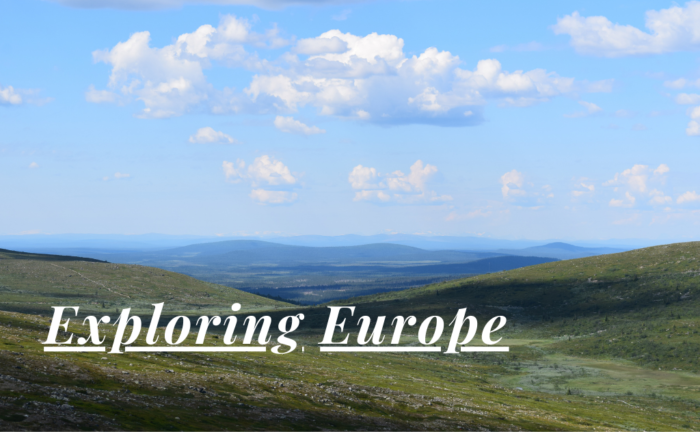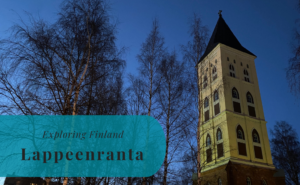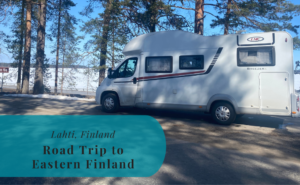This is Jyväskylä, the largest city in Finland that does not have a Swedish version of its name. It is in the region of Central Finland, in an area that is known as the Finnish Lakeland. The city has a population of around 144.000 inhabitants, making it the 7th largest town in Finland. Almost 97% of these people have Finnish as their native language, followed by small groups of Russian and Swedish speakers. But can you imagine that this city only had around 10.000 inhabitants at the beginning of World War II?





A Short History of Jyväskylä
Jyväskylä was at the beginning of the 19th century the largest settlement in Laukaa Parish. Jyväskylä received its town charters in 1837 from the Emperor of Russia Nikolai I.
The first Finnish language school was founded in Jyväskylä in 1858, it was the first school teaching in Finnish in the country. This has turned the city into a center for Finnish education, culture, and language, promoting what is known as “Finnishness”. A teacher training college was founded in 1863, and it became the College of Education in 1937. The college expanded and was in 1967 rebranded as the University of Jyväskylä.
Industrialization in Jyväskylä began on a larger scale at the end of the 19th century. This was when the large surrounding forests became a revenue possibility. Paper and plywood factories were founded in 1912 and the defense industries found a foothold here in the interwar period of the 1920s and 1930s.
Jyväskylä eventually became the fastest growing city in Finland during the 20th century. The population of around 10.000 prior to the Second World War had at the end of the century grown to over 115.000 in the year 2000.








Things to Do and See
Jyväskylä is a university town and there is plenty of space to enjoy this town at a very low cost. The many parks and outdoor areas offer some great possibilities for those who love the outdoors. In addition, there are several museums and other indoor activities available for those who have decided to explore the wide streets of central Jyväskylä.
Jyväskylä Harbour & Jyväsjärvi
Jyväskylä Harbour comes to life during the summer and it is a popular spot for locals and tourists alike to enjoy the sunshine and views out over the lake Jyväsjärvi. Lake Jyväsjärvi is connected with the much larger Lake Päijänne. Päijänne is the second largest lake in Finland and several ships offer cruises from the harbor.
Natural History Museum of Central Finland
The Natural History Museum of Central Finland is a part of the University of Jyväskulä. It not only stores collections of natural science materials, but the museum also exhibits the diversity in the local nature.
Central Finland’s Craftsmanship Museum
Central Finland’s Craftsmanship Museum, or Käsityöläismuseo in Finnish, is housed in two of the oldest buildings still standing in Jyväskylä. These are the Carpenter’s House and the Coppersmith’s House. The museum tells the stories of the families that used to live and work here, teaching about the life of the craftsmen.
Craft Museum of Finland
Craft Museum of Finland, or Suomen Käsityön Museo in Finnish, is not to be mixed up with the museum here above. The museum exhibits many crafts from the past, such as national costumes and other handicrafts.
Jyväskylä Art Museum
Jyväskylä Art Museum, or the Taidemuseo in Finnish, is near the main church. Its focus for the exhibitions is Finnish contemporary art.
Jyväskylä City Church
The Jyväskylän Kaupunginkirkko, or the city church, is right in the center of the city. The church dates back to 1879 and was completed in 1890. The church is built with bricks and has space for around 600 visitors.
Vesilinna Observation Tower
On top of the Harju Ridge is the Vesilinna Observation Tower. The ridge is a popular recreational outdoor area close to the center of the city. The tower actually houses the Natural History Museum and a café and restaurant. The observation tower should according to online information be opened during the opening hours of the café and restaurant.
Mattilanniemi Beach
Mattilanniemi Beach is close to the Mattilanniemi Campus and Mattilanniemi Park. It is a small sandy beach in one of the bays of the lake Jyväsjärvi.
Lutakko Beach
Lutakko Beach is next to Lutakko Park, close to the Jyväskylä Harbour area. It is another small sandy beach with a view out over the Jyväsjärvi Lake.





How to Get to Jyväskylä
- Flights: The closest major airport is Jyväskylä Airport (JYV) 21 kilometers away. From here there are mostly domestic flights to Helsinki, but also a few seasonal charter flights.
- Car: Jyväskylä is at the intersection of the roads E75 and E63, between Lahti and Oulu, and between Tampere and Kuopio.
- Train: Trains connect Jyväskylä with Helsinki and other towns in Finland.
The driving distance from 5 major Finnish cities, according to Google Maps:
- Helsinki – 269 kilometers (3 h)
- Turku – 307 kilometers (3 h 35 min)
- Vaasa – 271 kilometers (3 h 16 min)
- Oulu – 339 kilometers (3 h 48 min)
- Joensuu – 350 kilometers (3 h 2 min)
Looking to Explore more of Finland and Europe?








